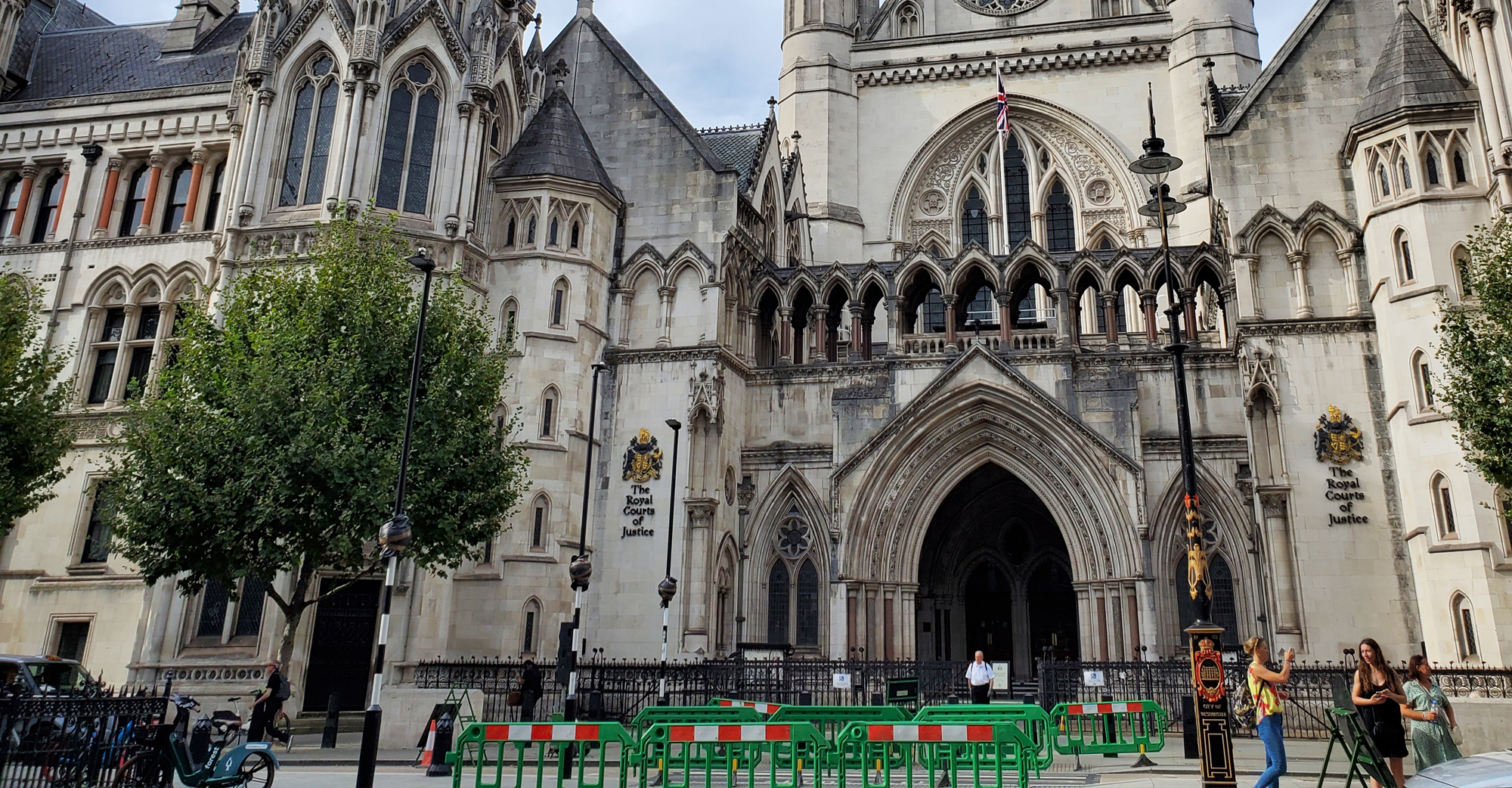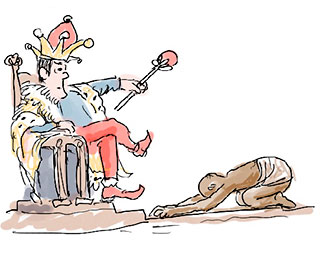What is Serfdom? Who led the Jacobites in the Battle of Culloden? These and more are in our new Global Trivia game, Part 18.
Global Trivia 19

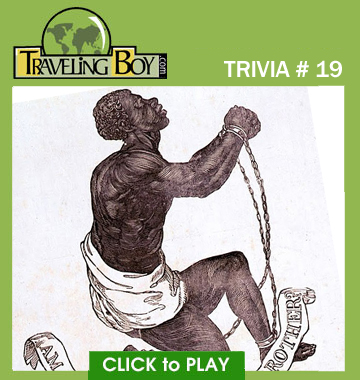
Start
Congratulations!
You have completed Global Trivia 19.

You scored %%SCORE%% out of a possible 5 points.
Your performance was: %%RATING%%
Your answers are highlighted below.
Question 1 |
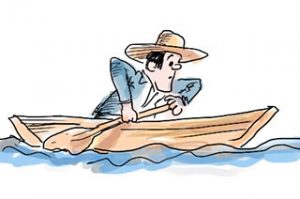
Name the World's Longest River
A | Amazon River |
B | Mississippi/Missouri |
C | Nile River |
D | Yangtze River |
E | Yenisei/Angara |
Question 1 :
C. Nile River
1. Nile River – 6,693 km.
2. Amazon River – 6,436 km.
3. Yangtze River – 6,378 km.
4. Mississippi/Missouri – 5,970 km.
5. Yenisei/Angara – 5,539 km.
1. Nile River – 6,693 km
Although most of us recognize the Nile as the lifeline of Egypt, the Nile is, in fact, an international river shared by 11 countries in Africa. However, it is the main source of water in two countries: Egypt and Sudan. The Blue and the White Nile are the two tributaries of the river with the latter having a greater length than the former. The source of the White Nile is not yet fully determined but is believed to be somewhere in Burundi or Rwanda. According to some reports, Lake Victoria is considered to be the source of the White Nile which is, in turn, fed by the Kagera River whose two major tributaries are the Ruvyironza and the Nyabarongo rivers of Burundi and Rwanda, respectively. The Kagera is formed at the confluence of these two rivers near the Tanzania-Rwanda border. The Blue Nile has a more defined origin in Lake Tana in Ethiopia. The two tributaries meet near the Sudanese capital of Khartoum. The Nile River’s final course is through Egypt before it forms a delta and drains into the Mediterranean Sea. According to the USGS, the length of the Nile River is 4,258 miles. It is the longest river in the world as well as the longest river in Africa.
2. Amazon River – 6,436 km
The Amazon River is undoubtedly the largest river in the world by discharge volume of water. However, its position as the second-longest river in the world is highly disputed as the title has for long been granted to the Nile River in Egypt. The dispute arises from the determination of the origin of the Amazon. Until now, the headwaters of the Apurímac River were considered to be the origin of the Amazon River. However, a recent 2014 study claims that the origin of the Amazon can be traced to the Cordillera Rumi Cruz from where Peru’s Mantaro River originates. This river then confluences with the Apurímac River (whose headwaters were earlier regarded as the source of the Amazon) and then other tributaries join the river downstream to form the Ucayali River which finally confluences with the Marañón River to form the main stem of the Amazon River. However, critics of this measurement point out that the study has not been published.
3. Yangtze River – 6,378 km
The Yangtze River is the world’s third longest river and the longest to flow entirely within one country. It is also Asia’s longest river. The river basin of the Yangtze houses one-third of the population of China, the most populated country in the world. Two origins of the Yangtze River has been suggested. Traditionally, the government of China recognizes the Tuotuo tributary located in the Tanggula Mountains as the source of the river. At 17,526 ft above sea-level, it is definitely the highest source of the Yangtze. According to new data, however, the source of the Yangtze River is located in the Jari Hill from where the headwaters of the Dam Qu tributary originate. These tributaries, and more join to form the mighty Yangtze River which finally drains into the East China Sea at Shanghai.
4. Mississippi/Missouri – 5,970 km
The river system comprising of the Mississippi, Missouri, and Jefferson rivers, is regarded as the world’s fourth longest river system. The river system drains 31 US states and 2 Canadian provinces. The Mississippi River begins in northern Minnesota where Lake Itasca is believed to be the origin of the river and drains into the Gulf of Mexico. However, when we regarded the Jefferson River as the furthest source of the Mississippi River, then we get the Mississippi–Missouri–Jefferson river system.
5. Yenisei/Angara – 5,539 km
This is the world’s fifth-longest river system and the largest draining into the Arctic Ocean. The Selenge River is regarded as the headwaters of this river system. The Selenge River is 992 km long and drains into Lake Baikal. The Angara river rises from Lake Baikal near Listvyanka and flows through the Irkutsk Oblast of Russia and finally joins the Yenisei River near Strelka. The Yenisei finally drains into the Arctic Ocean. The total length covered is 5,539 miles.
1. Nile River – 6,693 km.
2. Amazon River – 6,436 km.
3. Yangtze River – 6,378 km.
4. Mississippi/Missouri – 5,970 km.
5. Yenisei/Angara – 5,539 km.
1. Nile River – 6,693 km
Although most of us recognize the Nile as the lifeline of Egypt, the Nile is, in fact, an international river shared by 11 countries in Africa. However, it is the main source of water in two countries: Egypt and Sudan. The Blue and the White Nile are the two tributaries of the river with the latter having a greater length than the former. The source of the White Nile is not yet fully determined but is believed to be somewhere in Burundi or Rwanda. According to some reports, Lake Victoria is considered to be the source of the White Nile which is, in turn, fed by the Kagera River whose two major tributaries are the Ruvyironza and the Nyabarongo rivers of Burundi and Rwanda, respectively. The Kagera is formed at the confluence of these two rivers near the Tanzania-Rwanda border. The Blue Nile has a more defined origin in Lake Tana in Ethiopia. The two tributaries meet near the Sudanese capital of Khartoum. The Nile River’s final course is through Egypt before it forms a delta and drains into the Mediterranean Sea. According to the USGS, the length of the Nile River is 4,258 miles. It is the longest river in the world as well as the longest river in Africa.
2. Amazon River – 6,436 km
The Amazon River is undoubtedly the largest river in the world by discharge volume of water. However, its position as the second-longest river in the world is highly disputed as the title has for long been granted to the Nile River in Egypt. The dispute arises from the determination of the origin of the Amazon. Until now, the headwaters of the Apurímac River were considered to be the origin of the Amazon River. However, a recent 2014 study claims that the origin of the Amazon can be traced to the Cordillera Rumi Cruz from where Peru’s Mantaro River originates. This river then confluences with the Apurímac River (whose headwaters were earlier regarded as the source of the Amazon) and then other tributaries join the river downstream to form the Ucayali River which finally confluences with the Marañón River to form the main stem of the Amazon River. However, critics of this measurement point out that the study has not been published.
3. Yangtze River – 6,378 km
The Yangtze River is the world’s third longest river and the longest to flow entirely within one country. It is also Asia’s longest river. The river basin of the Yangtze houses one-third of the population of China, the most populated country in the world. Two origins of the Yangtze River has been suggested. Traditionally, the government of China recognizes the Tuotuo tributary located in the Tanggula Mountains as the source of the river. At 17,526 ft above sea-level, it is definitely the highest source of the Yangtze. According to new data, however, the source of the Yangtze River is located in the Jari Hill from where the headwaters of the Dam Qu tributary originate. These tributaries, and more join to form the mighty Yangtze River which finally drains into the East China Sea at Shanghai.
4. Mississippi/Missouri – 5,970 km
The river system comprising of the Mississippi, Missouri, and Jefferson rivers, is regarded as the world’s fourth longest river system. The river system drains 31 US states and 2 Canadian provinces. The Mississippi River begins in northern Minnesota where Lake Itasca is believed to be the origin of the river and drains into the Gulf of Mexico. However, when we regarded the Jefferson River as the furthest source of the Mississippi River, then we get the Mississippi–Missouri–Jefferson river system.
5. Yenisei/Angara – 5,539 km
This is the world’s fifth-longest river system and the largest draining into the Arctic Ocean. The Selenge River is regarded as the headwaters of this river system. The Selenge River is 992 km long and drains into Lake Baikal. The Angara river rises from Lake Baikal near Listvyanka and flows through the Irkutsk Oblast of Russia and finally joins the Yenisei River near Strelka. The Yenisei finally drains into the Arctic Ocean. The total length covered is 5,539 miles.
Question 2 |
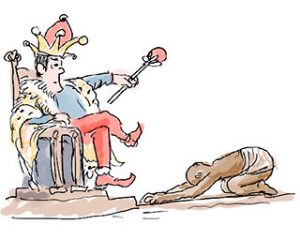
Is slavery and serfdom the same thing?
A | Yes |
B | No |
Question 2 :
B. No
Serfdom is a condition of bondage that existed in the High Middle Ages in Europe, lasting up to the mid-19th century. It took place within the context of the feudalism system. Peasants (also called serfs) were not allowed to leave their land without the permission of their landlords. They belonged to the lowest social class of the feudal society. Slaves were human beings who were bought and sold as property. They were not considered humans and as such had no rights. However, serfs were legally people having limited rights in comparison to free peasants.
Serfdom is a condition of bondage that existed in the High Middle Ages in Europe, lasting up to the mid-19th century. It took place within the context of the feudalism system. Peasants (also called serfs) were not allowed to leave their land without the permission of their landlords. They belonged to the lowest social class of the feudal society. Slaves were human beings who were bought and sold as property. They were not considered humans and as such had no rights. However, serfs were legally people having limited rights in comparison to free peasants.
The Origin of Serfdom
Before the 10th century, serfdom existed in the ancient world. In ancient Greek, the “helots” of the city-state of Sparta played the same role as the serfs. Similarly, during the reign of the Roman Empire, in the 3rd century, there was a shortage of labor. As a result, Roman freemen volunteered to work on the lands of large farm owners as tenant farmers. These workers became known as the “coloni.” Afterwards, there was an empire that ruled Europe for over 200 years known as the Carolingian Empire. When the empire collapsed in the 10th century, it left a huge gap. There was no strong empire to rule Europe at the time. To fill this gap, a crop of powerful feudal lords arose. They established serfdom as a source of agricultural labor for their large farms. Hence, this was the context in which serfdom came into existence.Duties of the Serfs
The serfs would work for their lord for 5-6 days per week. They used the rest of the time to work on their land. Some of their responsibilities to their lords included digging ditches, plow the fields, repair fences, and harvest the crops. The other duty of the serfs was paying taxes and fees to the landlord. The tax calculation depended upon the amount of the land owned by the serf. The standard taxes would be a third of the land. Furthermore, the serfs had an obligation to pay fees whenever they married, had a baby, or during a war. The payment was in the form of food items rather than money. Money was a rare commodity then. Whatever the payment was, it had to undergo a test to determine whether it was good enough. For instance, if the serf gave a chicken as payment, the chicken had to be able to jump over a fence.The End of Serfdom
In Western Europe, serfdom declined during the Middle Ages. The Black Death greatly reduced the rural population and strengthened the bargaining powers of the workers. In England on the other hand, serfdom’s end began with the 1381 Peasants’ Revolt. It ended fully in 1574 with the freeing of all the remaining serfs by Elizabeth I. In France, the end of serfdom was de facto as pronounced by Philip IV, Louis X, and Philip V. By the 15th century most serfdom scenarios excluding a few cases had ceased. In other parts of Europe such as Castile, northern France, Sweden, Germany, and Portugal among others, serfdom had to stop due to the revolts staged by the peasants.Question 3 |
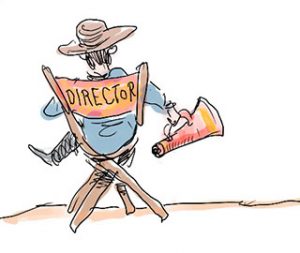
Name the John Huston film adapted from a James Joyce short story.
A | Beat the Devil |
B | The Dead |
C | Reflections in a Golden Eye |
D | Under the Volcano |
E | Wise Blood |
Question 3 :
B. The Dead (By James Joyce, short story from "Dubliners.")
John Huston's dramatization of Joyce's masterful story, 'The Dead,' is all the more poignant because it was his last film, made from his wheelchair while using an oxygen mask. At the time of making the film, he called the short story his favorite literary work
Beat the Devil
Reflections in a Golden Eye
Under the Volcano
Wise Blood
John Huston's dramatization of Joyce's masterful story, 'The Dead,' is all the more poignant because it was his last film, made from his wheelchair while using an oxygen mask. At the time of making the film, he called the short story his favorite literary work
Beat the Devil
Reflections in a Golden Eye
Under the Volcano
Wise Blood
Question 4 |
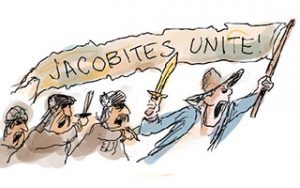
Who led the Jacobites in the Battle of Culloden?
A | Joan of Arc |
B | Robert the Bruce |
C | Mary, Queen of Scotts |
D | Charles Edward Stuart |
E | William Wallace |
Question 4 :
D. Charles Edward Stuart (aka Bonnie Prince Charlie)
The Battle of Culloden is one of the most tragic and historically important civil wars of Great Britain. It was the final attempt of the Jacobite rising that resulted in a victory for the House of Hanover over the House of Stuart. The Jacobite rising was instigated by Charles Edward Stuart, essentially for the restoration of the House of Stuart as a ruling family. However, it soon had a religious touch as Catholic Christians supported the House of Stuart while the British army was backed by Protestant Christians. The Battle of Culloden is also famous for being the last ever pitched battle in the history of Great Britain.
On April 16th 1746, the two armies came face to face – the Highland Scottish Jacobites and the British Government’s troops – at the Culloden Moor. Charles Edward Stuart ignored the advice of his generals, chose to fight on flat, open, marshy ground where his forces would be exposed to superior government firepower. The Jacobite troops of 6,000 men advanced without any form of military coordination. Britain’s Duke of Cumberland, youngest son of King George II, utilized the best of the situation with his army of 8,000 soldiers, and shattered the Jacobite front lines. Within the first half hour of the battle, Charles Edward Stuart, plagued by indecision, abandoned his Jacobite forces for safety, which greatly affected his troop’s morale. Meanwhile, the Scottish Highlanders attacked the second line of government army, where they were rebuked, losing their left wing. Seeing that, the Duke of Cumberland ordered an advance of his government armies to end the battle. It took only one hour for the government forces to win this battle. The British suffered casualties of 300, whereas the Jacobites lost 2,000 including 200 French.
The night before the Battle of Culloden, the Jacobite army made a strategic move by planning a night attack on the British army camped in Nairn. It was a slow march due to darkness and lack of coordination, which forced them to return to their camp without attacking the government forces. On the day of the Battle of Culloden, the Jacobites where exhausted from lack of sleep and food, and, in some cases, with no ammunition. William of Cumberland's troops committed a number of atrocities as they hunted for the defeated Jacobite soldiers, earning him the title, the Butcher from the Highlanders. In England, the Sweet William flower is named in his honor; in Scotland a weed bears his name, A Stinking Billy.
Charles Edward Stuart hid in the moors, and eventually sailed to France, disguised as a woman.
The Jacobite defeat lead to the Highland Clearances: the forced eviction of inhabitants of the Highlands and western islands of Scotland, which cleared the land of people primarily to allow for the introduction of sheep pastoralism. The Highland clan system was outlawed, and the playing of the Bagpipe was banned in Scotland, classified as an instrument of war by the loyalist government.
The Battle of Culloden is one of the most tragic and historically important civil wars of Great Britain. It was the final attempt of the Jacobite rising that resulted in a victory for the House of Hanover over the House of Stuart. The Jacobite rising was instigated by Charles Edward Stuart, essentially for the restoration of the House of Stuart as a ruling family. However, it soon had a religious touch as Catholic Christians supported the House of Stuart while the British army was backed by Protestant Christians. The Battle of Culloden is also famous for being the last ever pitched battle in the history of Great Britain.
On April 16th 1746, the two armies came face to face – the Highland Scottish Jacobites and the British Government’s troops – at the Culloden Moor. Charles Edward Stuart ignored the advice of his generals, chose to fight on flat, open, marshy ground where his forces would be exposed to superior government firepower. The Jacobite troops of 6,000 men advanced without any form of military coordination. Britain’s Duke of Cumberland, youngest son of King George II, utilized the best of the situation with his army of 8,000 soldiers, and shattered the Jacobite front lines. Within the first half hour of the battle, Charles Edward Stuart, plagued by indecision, abandoned his Jacobite forces for safety, which greatly affected his troop’s morale. Meanwhile, the Scottish Highlanders attacked the second line of government army, where they were rebuked, losing their left wing. Seeing that, the Duke of Cumberland ordered an advance of his government armies to end the battle. It took only one hour for the government forces to win this battle. The British suffered casualties of 300, whereas the Jacobites lost 2,000 including 200 French.
The night before the Battle of Culloden, the Jacobite army made a strategic move by planning a night attack on the British army camped in Nairn. It was a slow march due to darkness and lack of coordination, which forced them to return to their camp without attacking the government forces. On the day of the Battle of Culloden, the Jacobites where exhausted from lack of sleep and food, and, in some cases, with no ammunition. William of Cumberland's troops committed a number of atrocities as they hunted for the defeated Jacobite soldiers, earning him the title, the Butcher from the Highlanders. In England, the Sweet William flower is named in his honor; in Scotland a weed bears his name, A Stinking Billy.
Charles Edward Stuart hid in the moors, and eventually sailed to France, disguised as a woman.
The Jacobite defeat lead to the Highland Clearances: the forced eviction of inhabitants of the Highlands and western islands of Scotland, which cleared the land of people primarily to allow for the introduction of sheep pastoralism. The Highland clan system was outlawed, and the playing of the Bagpipe was banned in Scotland, classified as an instrument of war by the loyalist government.
Question 5 |
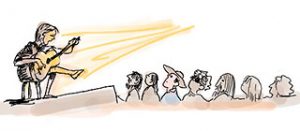
This iconic pop artist was sadly dubbed The Queen of El Lay by Rolling Stone Magazine.
A | Joan Baez |
B | Judy Collins |
C | Carole King |
D | Joni Mitchell |
E | Linda Ronstadt |
Question 5 :
D. Joni Mitchell
From Reckless Daughter: A Portrait of Joni Mitchell by David Yaffe
With her high cheekbones and her flaxen hair, Joni Mitchell emerged in the late 1960s as some kind of hippy Venus with an overbite. She was the personification of the New Woman, liberated by the pill and by her talent to take ownership of her body, her art and her destiny. She was thoughtful, feisty, free-wheeling, ‘open to experience and in touch with the miraculous’, as she put it. Her precocious songs chronicled the complexity of her newly claimed agency; they meditated on liberty and longing, love and lust, independence and loneliness. ‘I’m a living storybook,’ she said of her autobiographical catalogue. In her thrilling falsetto Mitchell told of ‘love’s illusion’ before we knew quite what either love or disillusion was. Her songs calmed the mind of a turbulent, panic-struck society. ‘Before Prozac, there was you,’ two teenage fans once told her.
From Reckless Daughter: A Portrait of Joni Mitchell by David Yaffe
With her high cheekbones and her flaxen hair, Joni Mitchell emerged in the late 1960s as some kind of hippy Venus with an overbite. She was the personification of the New Woman, liberated by the pill and by her talent to take ownership of her body, her art and her destiny. She was thoughtful, feisty, free-wheeling, ‘open to experience and in touch with the miraculous’, as she put it. Her precocious songs chronicled the complexity of her newly claimed agency; they meditated on liberty and longing, love and lust, independence and loneliness. ‘I’m a living storybook,’ she said of her autobiographical catalogue. In her thrilling falsetto Mitchell told of ‘love’s illusion’ before we knew quite what either love or disillusion was. Her songs calmed the mind of a turbulent, panic-struck society. ‘Before Prozac, there was you,’ two teenage fans once told her.
Once you are finished, click the button below. Any items you have not completed will be marked incorrect.
Get Results
There are 5 questions to complete.
You have completed
questions
question
Your score is
Correct
Wrong
Partial-Credit
You have not finished your quiz. If you leave this page, your progress will be lost.
Correct Answer
You Selected
Not Attempted
Final Score on Quiz
Attempted Questions Correct
Attempted Questions Wrong
Questions Not Attempted
Total Questions on Quiz
Question Details
Results
Date
Score
Hint
Time allowed
minutes
seconds
Time used
Answer Choice(s) Selected
Question Text
All done
Deplorable! You need to travel more! This is pathetic!
Deplorable! You need to travel more! This is pathetic!
Embarrassing! Keep trying! We know you're better than that. Play the game again.
Not that bad! But not good either. Play the game again.
Pretty good ... but not perfect.
Perfect! Are you brilliant traveler or what?
